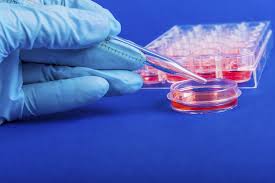There are five eye diseases that are the leading causes of blindness and low vision in the United States: age-related macular degeneration, cataracts, glaucoma, diabetic retinopathy and eye injuries.

There are varying degrees of what is considered to be legally blind as well as varying degrees of visual impairment. People who are legally blind have vision that is not better than 20/200 in the better eye, even with eyeglasses. Visual acuity of 20/200 means that the person can see at 20 feet what a person with perfect 20/20 vision can see at 200 feet.
The #1 cause of severe vision loss in adults over the age of 50 in the United States is Age-Related Macular Degeneration (AMD). There are two forms of AMD: Dry and Wet. The wet form is treated with intravitreal injections. The dry form does not have specific treatments available although supplementation with an AREDS 2 formula like VisiVite's AREDS 2 plus Gold nutritional formula is intended to support macular health, and is based upon the National Eye Institute studies.
Cataracts are the leading cause of vision loss in the United States and develop naturally as we age resulting in a clouding over of the natural lens in the eye. Cataract surgery is the primary treatment for cataracts.
Glaucoma is another eye disease usually associated with age and is the result of progressive damage to the optic nerve and typically diagnosed in adults over the age of 40. Early diagnosis is key in receiving effective treatment to help slow or prevent additional vision loss.
Diabetic retinopathy is associated with diabetes and is caused by the body's inability to regulate blood sugar levels resulting in damage to the blood vessels that support the retina. Managing diabetes is important in helping to prevent diabetic retinopathy from developing.
And finally, any kind of injury or trauma to the eye can result in loss of vision. Following proper eye-safety protocols when working in a dangerous environment is important in preventing eye injury. Eye stroke can cause a loss of blood flow and while the vision loss may be temporary, if not treated appropriately, can become permanent.
Vigilance in maintaining eye health as well as overall health is important in preventing vision loss now, and as we age.














